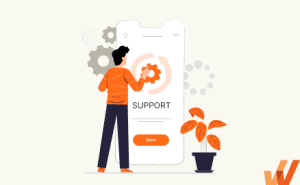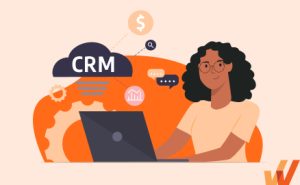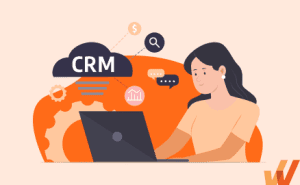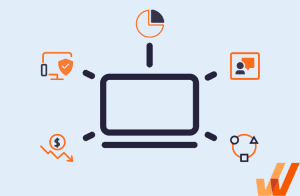CRM implementation projects are known for having a failure rate of 30–70%. However, there are ways to ensure successful CRM software implementation. How you approach planning, implementing, and training will all impact the success of your CRM rollout.
With 22% market share, Salesforce is the most widely used enterprise CRM software. However, implementing Salesforce is a notoriously complex IT process with a reputation for challenging even the most experienced Salesforce IT DevOps teams and system admins. According to G2, Salesforce has an average time-to-implement of 4-6 months and an average ROI time of 12 months.
Enterprises undertaking a Salesforce implementation should plan carefully, invest in the right partner(s), and include the needs and concerns of their end-users in the change management process as much as possible — including all affected employees in the planning and roll-out will increase your chances of a successful Salesforce implementation.
In this article, we’ll discuss how organizations can create a Salesforce implementation plan that accelerates ROI and enables companies to achieve their sales objectives.
What are the 8 steps for a successful Salesforce implementation project?
Benefits of Salesforce Implementation
According to Nucleus Research, the average CRM ROI is $8.71 for every dollar spent. Before onboarding and implementing Salesforce at your company, you should fully understand the benefits of Salesforce implementation that drive revenue, improve seller productivity, and enable organizations to achieve sales objectives.. These benefits include:
- Increased Efficiency: Salesforce can streamline sales processes and reduce manual and repetitive actions. This enables sales teams to focus on more important aspects of their role, such as closing deals and nurturing customer relationships. Salesforce Sales Cloud can increase sales by 29%, improve seller productivity by 34%, and improve sales forecasting accuracy by 42% according to Salesforce data.
- Enhanced Collaboration: As a CRM, Salesforce provides a centralized platform where your teams can collaborate on customer information and insights, and update customer profiles in real-time. Increased collaboration leads to increased communication across departments further unifying your approach to customer acquisition.
- Data-driven Decision Making: Salesforce provides robust analytics and reporting tools to track sales performance, customer behavior, and industry trends. This data helps your teams make informed decisions, identify opportunities faster, and hone their strategies to close more deals. In fact, 74% of sellers said Salesforce improved their access to customer data.
- Scalability: One of the biggest benefits of Salesforce is how scalable the platform is. Regardless of the size of your business, Salesforce can fit your needs, as well as scale alongside you and evolve as you grow.
- Enhanced Customer Experience: Salesforce centralizes customer data and profiles which enables your teams to provide personalized and targeted engagements with customers. This personalized approach leads to an improved, more personal customer experience, that fosters loyal customers who become repeat purchasers.
Challenges of Salesforce Implementation
You should also understand the challenges of Salesforce implementation before you launch headfirst into a Salesforce implementation project. The common challenges of implementing Salesforce include:
- User Adoption: Introducing a new platform like Salesforce often faces resistance from users accustomed to their existing systems and processes. Overcoming this resistance to change can be challenging, with the average Salesforce user adoption rate is 73% in the first year. Organizations should dedicate resources to building a Salesforce adoption strategy that coincides with your implementation plan to enable sellers with Salesforce user onboarding, training, and continued support.
- Data Migration: Migration is never easy and migrating data into Salesforce is no different. Data migration is a complex task as data is often fragmented across different systems or requires deep cleaning to prevent errors and inconsistencies. Without proper CRM data migration, the reilability and accuracy of your Salesforce database can be negatively affected.
- Integration Issues: Similar to data migration, integration with Salesforce can also raise issues. Compatibility with existing systems, data synchronization, and discrepancies in data formats all contribute to the complexity of Salesforce integration and require careful planning to avoid serious issues.
- Cost: Salesforce implementation involves various costs, including licensing, customization fees, training expenses, and ongoing maintenance and upkeep costs. Budget constraints or unexpected expenses can strain resources and bring your implementation plan to a grinding halt.
- Security and Compliance: Salesforce offers robust security features, but industry regulations and compliance requirements vary by industry, and data protection standards are ever-evolving. During implementation, you must carefully configure security settings, enforce strict access controls, and monitor user activities to mitigate security risks and maintain regulatory compliance.
Types of Salesforce Implementation
While it is possible to implement Salesforce without hiring a third-party company to support the project, investing in a Salesforce implementation partner who knows your industry will pay off.
Official Salesforce implementation partners are experts. They are able to optimize every stage of an implementation project: from planning and building to transitioning and training. This will save you frustration and time, while also providing you insights and opening up possibilities that wouldn’t be available without them.
Here are three types of Salesforce implementation projects:
1. In-house implementation
Implementing Salesforce entirely in-house is rare. According to Salesforce, 90% of Salesforce customers rely on implementation partners for consulting and apps. But, even so, some smaller or mid-sized organizations (and even enterprises on rare occasions) will attempt a fully in-house Salesforce implementation project.
Pros
- Upfront costs are low
- Will motivate your team to learn a lot about Salesforce quickly
Cons
- High potential for technical debt (i.e., when you create a short-term solution that creates more work in the long run)
- Often takes much longer than bringing in an expert and buying tools as needed due to the learning curve
- Limits your options as to what features and tools your team can learn about and build quickly
You’ll have a hard time finding any experts who recommend the fully in-house approach, though. Implementing Salesforce without an implementation partner or incorporating third-party apps almost guarantees you’ll be reinventing the wheel, and spending more time and effort to build less effective systems than if you’d invested in the right tools and support.
Official implementation partners and third-party integrations can help you create a customized system you need faster, better, and with greater foresight than you could on your own.
2. Third-party implementation partners
There are many Salesforce implementation partners and tools out there, some of which provide end-to-end services from helping you plan your CRM through training and even maintenance afterward.
However, it can be a large investment, and the monumental task of finding the best implementation partner for your particular industry and needs often deter teams who would otherwise jump at the chance to get expert support.
Pros
- Faster than trying to do it in-house — experienced implementation partners know the most efficient ways to build and introduce a Salesforce platform
- Provides assistance with organizational change
- Provides insights and helps you identify tangible business benefits that you didn’t know Salesforce could address
- More customized Salesforce instances
Cons
- Higher upfront costs
- Choosing the right partner can be difficult
- Lack of in-house IT talent that can continuously support Salesforce maintenance, meaning there is a need for continuously leveraging a third-party for ongoing support
There are many ways to use Salesforce; it would take significant time and education to learn it all. That’s what implementation partners bring to the project — they’re experts in the software and have helped many organizations successfully implement Salesforce.
3. Hybrid implementation approach
If you’re confident you can handle some element of Salesforce implementation efficiently, you might consider a hybrid approach.
For instance, though many enterprise organizations will bring in an implementation partner for planning, building, and data migration, they might have a robust training department ready to go that’s eager to take on the CRM training portion.
Pros
- Flexible — you can bring in implementation support for just the areas with which you need extra expertise
- Likely less expensive than investing in an end-to-end Salesforce implementation partner
- Builds in-house experts that you can rely on for Salesforce maintenance and support issues
Cons
- Requires additional work on your end
- Can be tricky to decide which parts of the implementation should be outsourced to a partner and which should be kept in-house
There’s no one way to implement Salesforce — you can find a partner for whatever your goals and needs are.
Related Resources
The 8-Step Process for a Successful Salesforce Implementation
Salesforce is a complex CRM platform with many different products and an almost limitless capability for customization. That’s why planning and getting input from the system’s future users is important for building the right platform for your organization’s needs and achieving software ROI on the investment.
Here is an 8-step framework for organizations to follow to help support a successful Salesforce implementation project:
1. Identify what you need (and want) from Salesforce
Start by asking each department to compile a list of their responsibilities, recurring tasks, sales processes, and workflows. Based on the answers, you can determine which areas of the organization can benefit from implementing Salesforce and what they need Salesforce to do for them.
Organizations undergo CRM transformation projects to evolve and grow sales teams, ultimately allowing them to achieve sales objectives. Sales leaders must tie these sales objectives to their Salesforce implementation plan to drive results.
2. Create a budget
Salesforce implementation costs vary widely, so your strategy will depend largely on your budget. Now that you have an idea of what you want to get out of Salesforce, you can begin to research the different options and costs.
Here are some common expenses:
- Salesforce licenses
- Salesforce consulting
- Implementation partner
- Data migration
- Integrations
- Salesforce training
- Salesforce adoption
- IT maintenance
- End-user support
3. Find the right expert for your needs
Official Salesforce implementation partners aren’t just experts when it comes to Salesforce; they each have their own industry expertise that will influence what they offer organizations. Look for a partner who has experience implementing organizations of your size within your industry.
Trailhead has a 10-minute course on choosing a Salesforce implementation partner that can help you jump-start your search with key skills to look for and a list of useful questions to ask.
4. Plan your organizational change management strategy
Getting your entire workforce comfortable with a new CRM can be difficult, so it’s your responsibility to ensure employees have everything they need to adapt to the new system. If you want to give your organization the best chance of success, putting effort into your organizational change management strategy is vital.
Start by actively seeking out your employees’ opinions via surveys and setting up a system so employees can ask questions and submit feedback as early in the change implementation process as possible. For the most honest feedback, make sure it’s an anonymous system. From there, strategize your Salesforce implementation roll-out and your communication plan.
5. Migrate your CRM data
To get your new Salesforce CRM up and running, you’ll need to move any data you want to have access to into the new system.
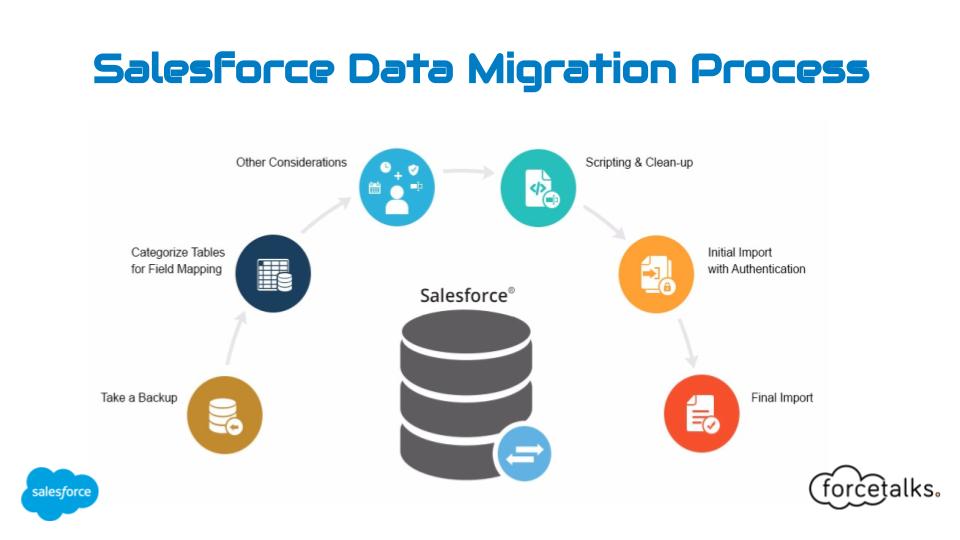
Image Source – Forcetalks
Migrating data is more challenging than many organizations anticipate, particularly when they underestimate the skill and knowledge required to make the shift, so invest in an implementation partner with experience migrating data in an organization of your size to help you ensure the transition goes smoothly.
6. Roll out features gradually
The endless possibilities that Salesforce offers and the dizzying number of features available is one of the best parts of implementing this widely popular CRM, but these same aspects can make learning to use the platform overwhelming and cause low Salesforce adoption across your team.
That’s why gradually rolling out features can help ease the transition and give employees some breathing room to learn and adapt at a more reasonable pace.
Kick things off by introducing a few elements and features per team. Solicit feedback and observe how the first roll-out goes. Then adjust your process before rolling out the next tools or features.
7. Invest in employee training
Whatever you do, don’t cut corners on training. There’s a steep adoption curve for Salesforce, and if your employees don’t have enough training and resources, you’ll risk lower Salesforce adoption rates than if you give your teams what they need to succeed.
Unless you have a robust learning & development (L&D) department with Salesforce experience, consider bringing in an implementation partner for this part. In addition to investing in professional training, offer employees other resources for ongoing learning.
You should also invest in a digital adoption platform (DAP) such as Whatfix to provide in-app guided Salesforce onboarding and training, as well as provide on-demand self-help user support.

With Whatfix for Salesforce, your team is empowered to create interactive walkthroughs, task lists, smart tips, self-help wikis, and more – all embedded directly in your Salesforce CRM, allowing for your team members to learn in the flow of work.
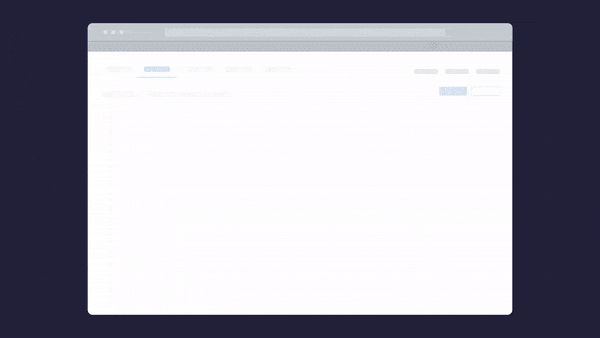
8. Provide proper CRM maintenance & support
Salesforce implementation is an ongoing process. There will always be updates and changes, so plan to maintain your CRM. Your Salesforce implementation partner will likely help you set up your organization’s ongoing maintenance. You’ll also need to do regular reviews of your processes and workflows in order to make changes as needed.
With Whatfix, organizations are able to rely less on IT and admins for Salesforce-related support, and instead, embed contextual documentation and support in the moment of need with self-help wikis – all located directly in your Salesforce platform.
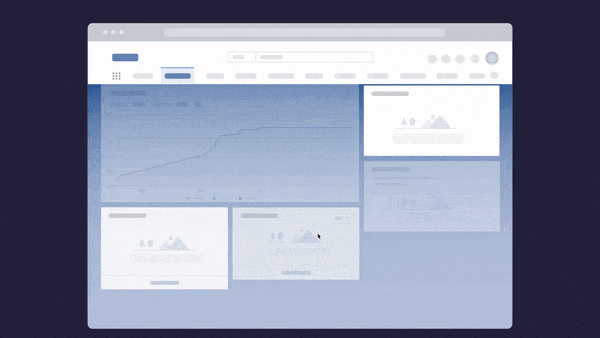
Tips to Guarantee a Successful Salesforce Implementation
A successful implementation focuses on being agile, communicative, and methodical. Make sure your employees are a part of your process; their feedback is key to creating a platform people actually want to use.
Here are four helpful tips to ensure your new Salesforce roll out is a success:
1. Hire a certified Salesforce admin
This will likely be a full-time job and will continue after adoption. An admin is one of nine official roles in Salesforce and the backbone of any Salesforce system. Their responsibilities include maintaining the system, helping teams build and implement new features, and staying up to date on Salesforce products and functionality.
2. Stay flexible
Your plan might change over the course of implementation when you learn more or bring in a partner. Expect to have last-minute changes to your implementation plan and revisions in your approach through trial and error.
Include employees in every department and at every level in the planning process to minimize surprises and resistance to change. Listen to them and be ready to adapt your strategy to what your future users are telling you.
3. Prioritize communication
Update everyone in the organization regularly on the implementation’s progress. Keeping employees updated will help make everyone feel like they’re part of the process, even when it’s too early to have many people involved. Prioritizing change communication also means regularly soliciting feedback from your employees, the end-users of your new Salesforce system. This will help you shape a more comprehensive CRM platform for your users and foster better employee engagement at the same time.
4. Offer a variety of training options and resources
Everyone learns differently, and one of the key things you’ll learn in a Salesforce implementation is that the more types of employee training you can offer your users for learning and staying up to date with the CRM, the better. That might include traditional classroom-style courses, apps, e-books, gamified training, official Salesforce training, blogs, and podcasts. Thanks to the massive popularity of Salesforce, there are plenty of resources out there to offer, so make use of them.
✓ Thank you, the checklist will be sent to your email
Salesforce Adoption Clicks Better With Whatfix
When building your Salesforce implementation plan, remember that it’s your team who will determine whether or not the platform will be used.
A whitepaper on CRM Salesforce from Forrester found: “CRM deployments often fail to deliver expected results because employees don’t use the CRM. They don’t understand the value that CRM can impart to their jobs. They also often don’t know how to use the CRM features because of inadequate training.”
With Whatfix, IT teams and CRM application owners can drive adoption and achieve enterprise software ROI by enabling sellers with in-app guidance, hands-on training, and on-demand support.
With Whatfix Mirror, IT teams and application owners can create replica sandbox environments of their Salesforce Sales Cloud application to give sellers hands-on training experiences without technical dependencies. This enables sellers to learn by doing simulated sales tasks, helping them to accelerate proficiency and master CRM tasks without risking live software usage.

Whatfix DAP enables sellers with in-app guided experiences that support employees in their applications, on their contextual tasks, in the flow of work. With Whatfix, you can
- Use Tours and Task Lists to accelerate time-to-proficiency for new seller onboarding.
- Drive complex CRM workflow adoption and support employees on infrequently done tasks with Flows.
- Smart Tips give sellers additional context or nudge them to take specific action.
- Pop-Ups remind sellers to complete mandatory training, alert them to company news, or sales process changes.
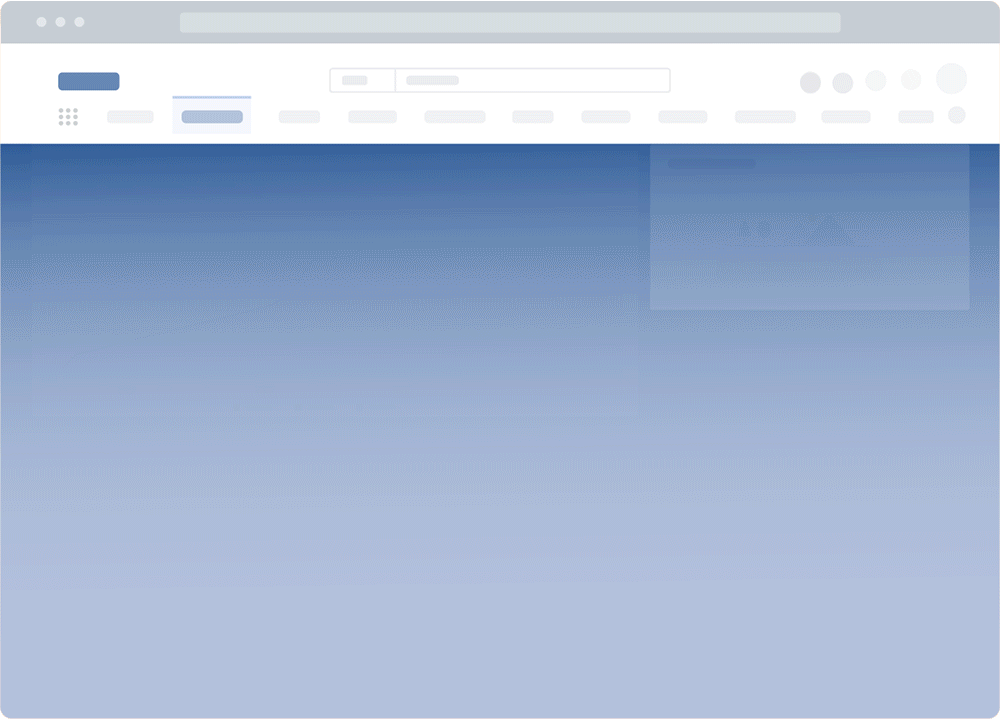
Whatfix Self Help provides on-demand performance support to your sellers and overlays on your Salesforce CRM UI. Self Help integrates with your knowledge repositories, like your LMS, SOPs, sales playbooks, and training resources, aggregating them (along with third-party resources like Salesforce’s help documentation and user communities) into one in-app help center that enables sellers to search for any contextual CRM-related, company-related, or task-related challenge they’re facing.

With Whatfix Guidance Analytics, track and analyze how sellers consume and engage with your in-app CRM training and user performance support content to identity areas of seller friction to improve sales processes. Answer questions like, “how many AEs completed their new user Task List?”, “what sales teams are following our process guidance correctly?”, and “what are the most searched Self Help queries?”

Request a demo to see how Whatfix empowers organizations to improve end-user Salesforce adoption, reduce the need for IT support, and improve the productivity and performance of sales teams.

